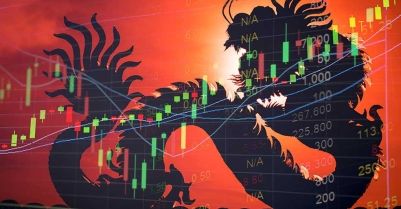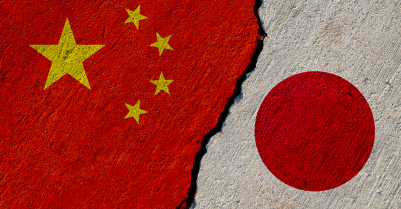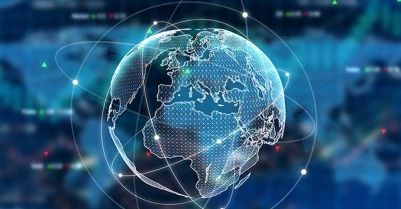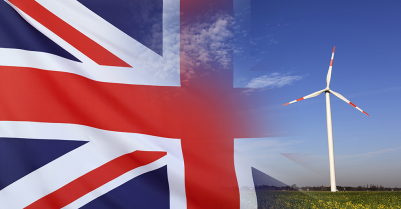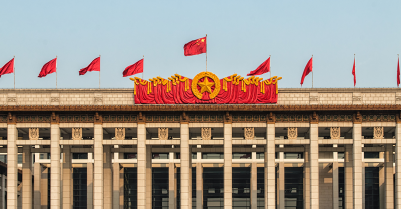-
View article
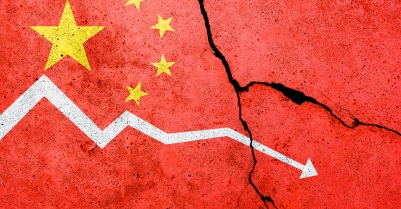 #Economy
#EconomyChina: confidence, price war and credibility are the watchwords in this early part of the year
2024/03/26
United States: a crisis of legitimacy
Ultimately, we all know very well that America’s problems are not going to disappear when the elections are over. A political crisis is not to be confused with an electoral moment, be it ever so decisive. And political crises always unfold over the long term.
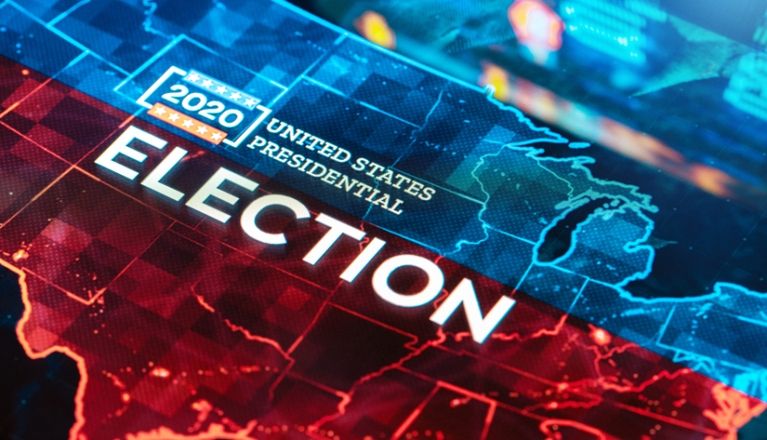
“The crisis consists precisely in the fact that the old is dying and the new cannot be born” (Antonio Gramsci)
In his latest book (1), Jared Diamond, who has long been a student of the process of civilisational collapse, points out twelve criteria that appear to play a decisive role in helping countries overcome the crises they encounter. He draws inspiration from human psychology and applies his analysis to, among others, Meiji-era Japan and the United States today. For a country to successfully come through a crisis, Diamond tells us, there must be both a “national consensus” that the nation is in crisis and “acceptance of national responsibility to do something”. In other words, the situation must be collectively named and a prominent role restored to political decision-making.
In the case of America, Diamond writes that “There is no way that China […] can destroy the US. Only we Americans can destroy ourselves.” In saying this, he highlights two key characteristics of the current situation: first, that the greatest risks are internal, but not everyone recognises this, since the temptation to blame the crisis on an external enemy is strong; second, that this is an existential crisis, not because of the outcome of the election but because there is a genuine systemic problem – what Antonio Gramsci in his studies of 1920s Europe called an “organic crisis”. In other words, a period of historical blockage when “the death of old ideologies takes the form of scepticism with regard to all theories and general formulae” (2). Indeed, one might say a time when the old is dying and the new cannot be born…
The role – now known – of socioeconomic inequality
In the United States, the blockage is linked to the much-debated political polarisation that became visible with the election of Donald Trump in 2016 – the moment when the world realised such polarisation could cause long-established consolidated democracies, thought to be free of political risk, to fracture. Much effort has since been spent exploring the causes of this polarisation (3): growing socioeconomic inequality fuelled by multiple phenomena – financialised globalisation, accelerating technological progress, deindustrialisation, policies encouraging massive private debt, urban and related changes, and demographics. And, of course, the effects of social media both on how people think (a more binary mode of thinking) and on the very nature of political action (4).
However, if we really want get to grips with the current polarisation in US political life, and thus to understand the real challenges the future president is going to have to tackle, we need to spell out exactly how this socioeconomic inequality has played out politically. The first and most obvious phenomenon – one that has played a critical role in elections – has been the clustering of protest votes, ranging from those left behind by globalisation to members of the middle and even upper classes disappointed by the perpetual swing of the pendulum between the traditional governing parties.
When polarisation is more about identity than ideology
However, this socioeconomic inequality has given rise to other political phenomena that are increasingly important today. In particular, an across-the-board increase in distrust – pointed out by Hannah Arendt as long ago as the 1970s (5) – distrust of politicians and experts, but also distrust within society itself. Writing in 2000, Robert Putnam went so far as to say he felt this distrust was akin to a kind of social disintegration (6). It is precisely this kind of disintegration that will fuel what researchers have called a “realignment” of social, cultural and religious identities. Lilliana Mason (7) thus shows how “partisan, ideological, religious, and racial identities have moved into strong alignment, or have become ‘sorted.’ This means that each party has grown increasingly socially homogeneous” (8).
American political engagement is thus increasingly identity-based, with huge implications for how democracy works, as many citizens begin to vote as if they were supporting their favourite football team: “We want our team to win, however they do it and regardless of the positions they adopt” (9). Sociologists have long demonstrated that the more closely identities are aligned within a group, the less tolerant group members are, and the more biased and angry they are towards those outside the group.
Which brings us to these new forms of “tribalism” (10) that have been the subject of so much debate between political pundits. And, above all, to the heart of the blockage spoken of by Gramsci, the source of America’s organic crisis. Political polarisation – which is veering into identity-based polarisation – is a grave danger to a culture of compromise in a country whose institutions were designed precisely on the assumption that the parties would be able to compromise: the only way to ensure an effective system of checks and balances that would protect democracy and maintain the much-vaunted balance between the Federal Government and federated states.
“The culture gap between classes is a fundamental driver of US politics” (J.C. Williams)
This identity-based realignment took place first of all within the Republican Party from the 1960s onwards, when the South – the heartland of the Democrats ever since the American Civil War – was won over by the Republicans (the goal of Nixon’s “southern strategy”), and particularly between 1980 and 2000, when the evangelical right (and its penchant for apocalyptic thinking) was incorporated into the Republican Party platform. “The Christian coalition helped the Republicans win back Congress after forty years in the minority. This was a momentous shift in contemporary American political life.” (11)
Meanwhile, the Democratic Party is also going through its own identity-based evolution, this time focused on a plethora of minorities, diverting the party from its traditional working-class base. Joan C. Williams (12) makes two important observations. First, the middle class “doesn’t like the poor”, since progressives “have lavished attention on the poor for over a century, devising social programs targeting them […] limited to those below a certain income level, which means they exclude those just a notch above.”. For example, 30% of poor families receive help to pay for day-care, while such help is virtually non-existent for the middle class. Second, the difference in values between the middle class and the ruling class has widened in every area, from the family, education and leisure to how to read, speak, write, bring up children and respond to racism and gender issues… Worse still, J.C. Williams highlights a kind of mutual contempt between the classes. A vulgar, brutish character like Omer Simpson thus came to gradually embody the myth of the worker, shown in such a positive light in 1950s films. So we now have two (or perhaps even three, four, five or more) countries that no longer know how to talk to or understand each other, but which are quite happy to judge each other.
No president will be able to duck the crucial question of legitimacy
The polarisation of American society – and its identity-based fragmentation – is thus a problem the future president is going to have to contend with, however big his lead in the vote count. Is there a way out of this situation without even more violent institutional or social upheaval? It’s going to be difficult, and it’s going to take some time. Moreover, polarisation indirectly affects the economy by eroding governments’ room for manoeuvre, both because of a permanent atmosphere of insurrection and also because of sporadic institutional logjams, notably in the judicial realm. And, above all, this polarisation creates a kind of structural illegitimacy around the presidency, with part of the population believing as a matter of principle that the election has been skewed. This illegitimacy also prevents real reform, and the absence of reform in turn aggravates the problem…
In conclusion, there will be no way out of the organic crisis without rebuilding the relationship between the elite and the middle class. As to the impact of all this in terms of risk, the US political crisis does not appear to have really been priced in by a market that looks unshakeably confident not so much in institutions as in the stability of a governance environment and, above all, the dollar as an all-powerful currency… The same can be said of rating agencies, though the explanation here is technically trickier. It would, after all, have been possible to legitimately downgrade US political risk via indicators assessing “ability to implement policy” (an idea often expressed in ratings by one of the World Bank’s KKZ indicators, “Government effectiveness”), as Standard & Poor’s did in its historic 2011 decision in response to delays passing US budgets under the Obama administration. This major, long-term political crisis is thus playing out amid a state of weightlessness, where political risks seem to have no effect on sovereign risk. However, it is well and truly redefining the State’s role and scope of intervention, and thus is already affecting the economy.
Tania Sollogoub
tania.sollogoub@credit-agricole-sa.fr
1. Jared Diamond, Upheaval: How Nations Cope with Crisis and Change, Allen Lane, 2019.
2. Antonio Gramsci, Prison Notebooks, Notebook 3 (June-July 1930), Columbia University Press, 2011.
3. T. Sollogoub, “The causes of anger”, Crédit Agricole, 2016.
4. T. Sollogoub, “The internet has triggered a global crisis of political systems”, XERFI video, 2019.
5. Ibid 3.
6. Robert D. Putnam, Bowling alone, Simon & Schuster, 2000.
7. Lilliana Mason, Uncivil Agreement: How Politics Became Our Identity, University of Chicago Press, 2018.
8. Maya Kandel, “Tribalism: the final stage of polarisation”, IdeAs, 2019.
9. Ibid 8.
10. Stephen Hawkins, Hidden Tribes: A Study of America’s Polarized Landscape, More in Common, 2018.
11. Ibid 8.
12. Joan C. Williams, The White Working Class: Overcoming Class Cluelessness in America, Harvard Business Review Press, 2017.

